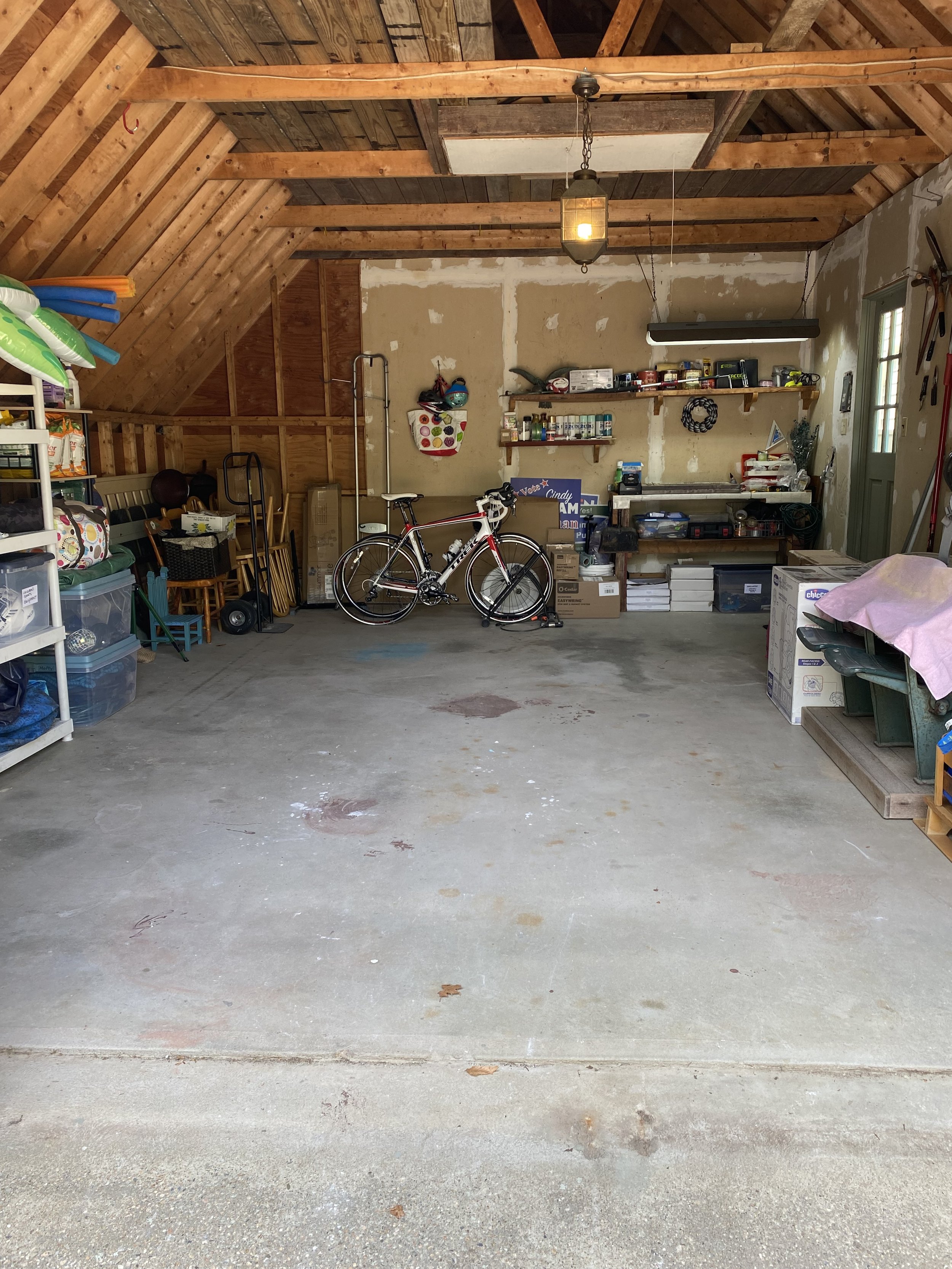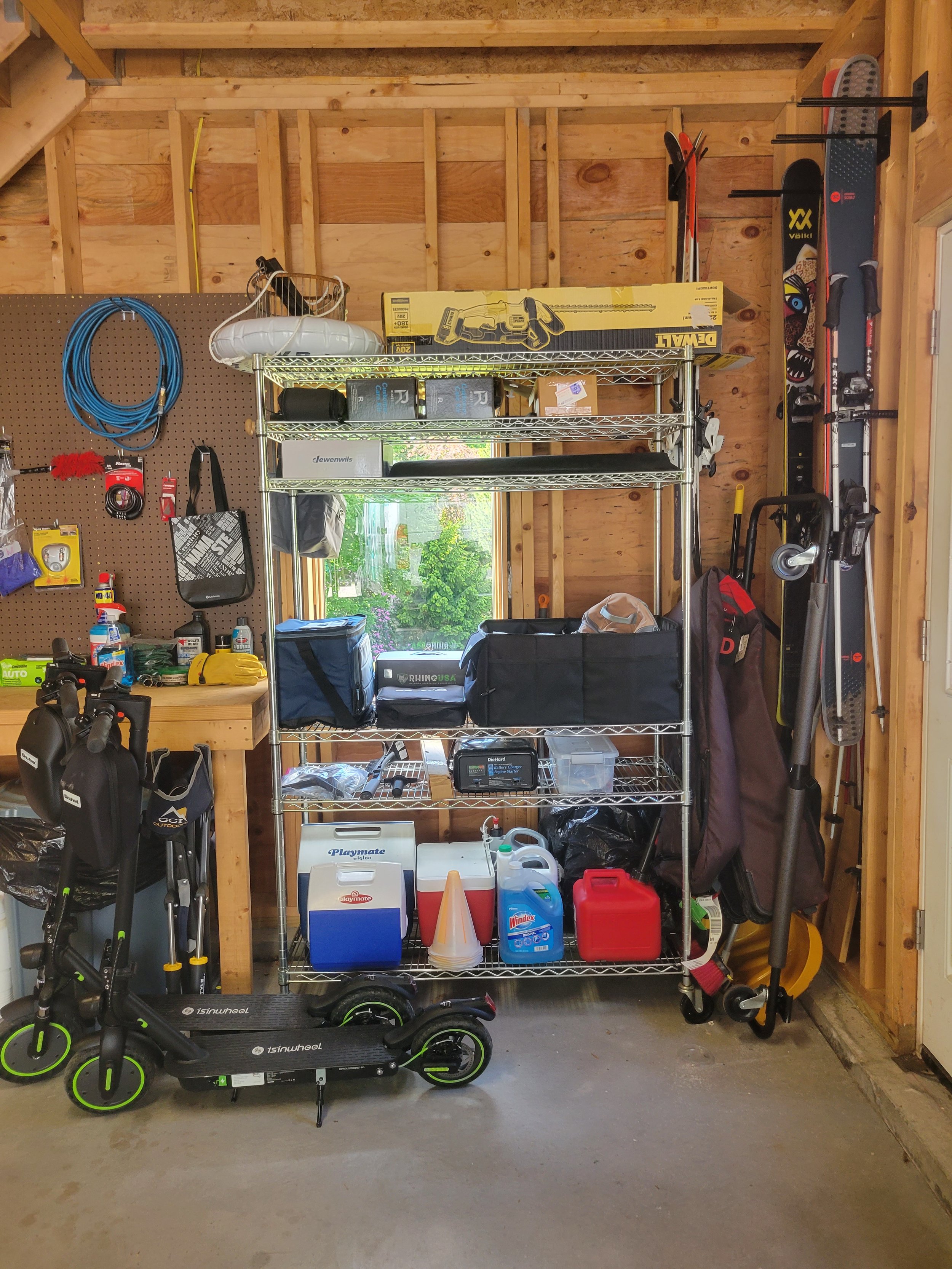The garage is a neglected space in many households. It often becomes a catch-all for various items, resulting in clutter and the inability to park cars inside. However, with thoughtful organization, garages can be transformed into functional and efficient spaces that meet the diverse needs of homeowners. In this blog post, we will explore key strategies for organizing garages, including the importance of appropriate storage, designated zones, vertical storage solutions, and avoiding storing unsuitable items.
Appropriate Storage for Outdoor Items: Garages are exposed to temperature variations, moisture, and dust, making it crucial to store items that are appropriate for outdoor conditions unless the garage is heated. Outdoor equipment such as gardening tools, sports gear, and camping supplies are best suited for garage storage. Utilizing durable, weather-resistant containers or shelves can help protect these items from damage while keeping them easily accessible.
2. Create Zones for Different Uses: To make the most of your garage space, consider dividing it into functional zones based on specific activities. Common zones include gardening, beach, recreational equipment, and automotive. By establishing designated areas, you can easily locate and access the items you need without rummaging through clutter. Use labels, color-coded bins, or clear storage containers to keep everything organized and visually appealing.
3. Utilize Vertical Storage: Garages often have ample vertical space that can be harnessed for storage. Take advantage of the walls by installing sturdy hooks, pegboards, or wall-mounted shelves. These solutions allow you to hang tools, bicycles, ladders, and other items, keeping the floor clear and maximizing available space. Additionally, consider overhead storage options such as ceiling-mounted racks for seasonal items or rarely used belongings.
4. Avoid Storing Clothes, Food, or Paper: Garages are unsuitable places for storing clothing, food, or paper items due to exposure to fluctuating temperatures, humidity, and potential pest infestations. Instead, allocate space inside your home for these belongings, preferably in a designated closet or storage area. This will help preserve the quality of your clothes, deter rodents, and prevent damage to important documents or sentimental papers.
5. Tackle the Clutter: Reclaim Your Garage: Statistics show that approximately 40% of Americans cannot park their cars in their garages due to clutter. Over time, garages tend to accumulate unnecessary items, outdated electronics, or broken tools. Take a proactive approach to decluttering by sorting items into categories: keep, donate, sell, or discard. Be honest with yourself about what you truly need and what has outlived its usefulness. Consider hosting a garage sale or donating items to local charities, recycling centers, or thrift stores to ensure they find new homes. MassSave is a great resource for recycling old appliances taking up valuable space in your garage.
Transforming your garage from a chaotic storage space into an organized and functional area requires planning and dedication. Following the abovementioned strategies, you can optimize the available space, create designated zones for different uses, and eliminate unsuitable items from your garage. Remember, appropriate storage for outdoor items, utilizing vertical space, and avoiding the storage of clothes, food, or paper are crucial steps toward reclaiming your garage. Embrace the opportunity to park your car inside (or create a home gym) and enjoy the newfound functionality and peace of mind that an organized garage brings.
“The secret to getting ahead is getting started.”






